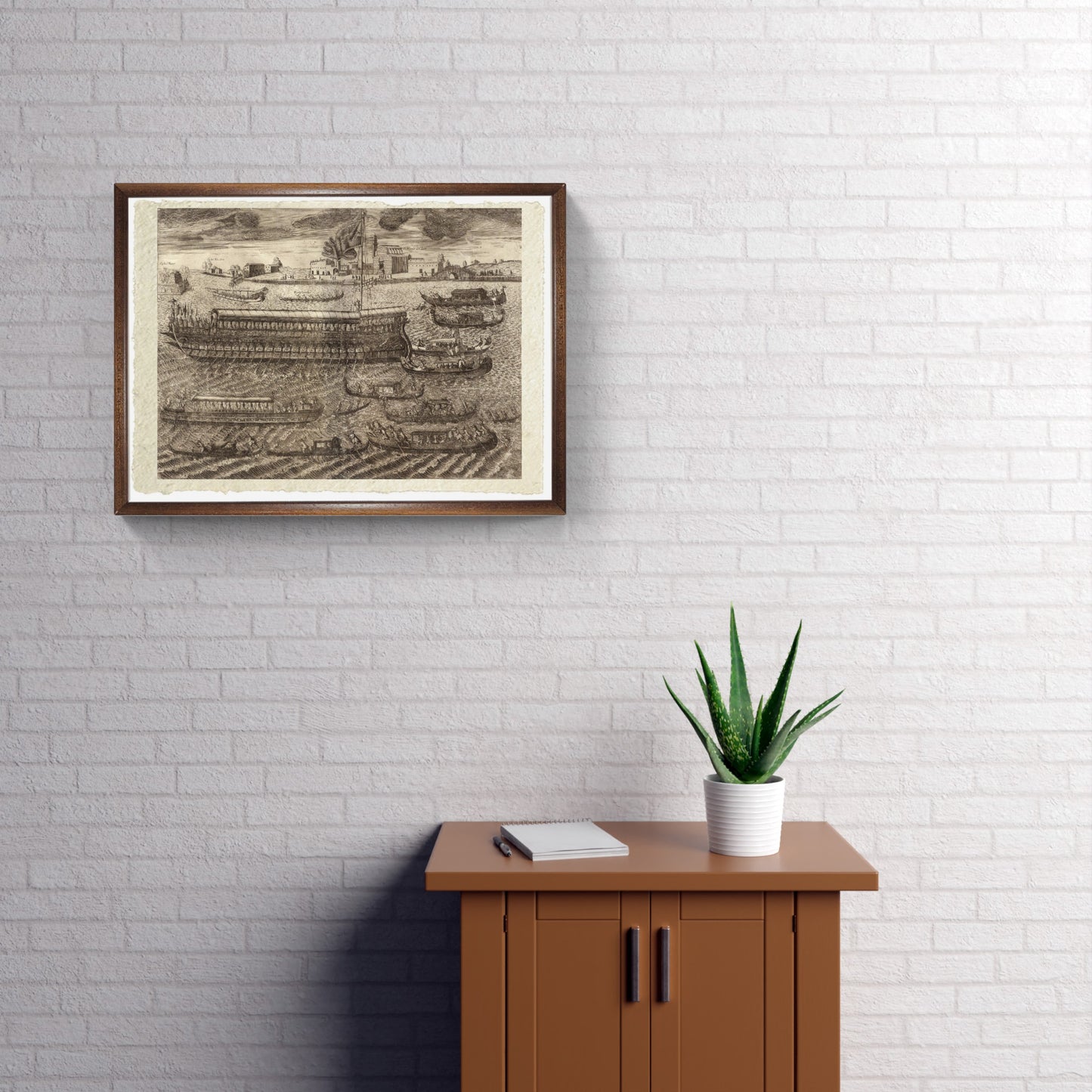Bucintoro in the Solemnity celebrated in Venice on Ascension Day (1693)
Bucintoro in the Solemnity celebrated in Venice on Ascension Day (1693)
Couldn't load pickup availability
SKU:6UTYTYN8YL8XY
The work
The bucintoro was the state galley of the Doges of Venice which annually made the journey to the Adriatic to celebrate the Marriage of the Sea, symbolically uniting Venice to the sea. The ceremony took place during the Festa della Sensa, until 1798. There were four large galleys, with the first bucintoro built in 1311. The last, most magnificent, began its service in 1729 under Doge Alvise III Sebastiano Mocenigo. Depicted by Canaletto and Francesco Guardi, it was 115 feet long, more than 26 feet tall and could seat 90 people. Pushed by 168 oarsmen and 40 sailors, the bucintoro featured a figurehead of Justice and numerous sculptures. The third bucintoro, built in 1601, was decorated with mythical figures and designed following the late Renaissance style, and is the one portrayed here, which was then demolished in 1719.
DO YOU WANT INFORMATION ON THE PRODUCT? WHATSAPP CHAT WITH A CONSULTANT
WHY BUY
- Magnificent and real colors
- It makes any room elegant
- Perfect for a prestigious gift
CHARACTERISTICS
Print on handmade Amalfi paper with frame
Sheet size: 30 x 42 cm
With frame: 32 x 44 cm;
Material: work printed on very fine handmade Amalfi paper with fringed edges, handmade beech wood frame
The Bucentaur, state galley of the Doges of Venice, made the annual journey to the Adriatic to celebrate the Marriage of the Sea, symbolically uniting Venice to the sea. The ceremony took place during the Festa della Sensa until 1798. There were four large galleys, with the first bucentaur built in 1311. The last, most magnificent, began its service in 1729 under Doge Alvise III Sebastiano Mocenigo. Depicted by Canaletto and Francesco Guardi, it was 115 feet long, more than 26 feet tall and could seat 90 people. Pushed by 168 oarsmen and 40 sailors, the bucentaur featured a figurehead of Justice and numerous sculptures. The third bucentaur, built in 1601, was decorated with mythical figures and designed following the late Renaissance style. In 1719 it was decided to demolish the galley. Vincenzo Maria Coronelli, an eminent baroque cartographer, created a well-known image of the bucentaur.
How reproductions are made



Scopri i pregiati materiali di Trizio Editore
Carta di Amalfi fatta a mano, cornice in legno di faggio e vetro museale. Guarda i particolari dei prodotti che renderanno la tua casa più elegante e preziosa.



